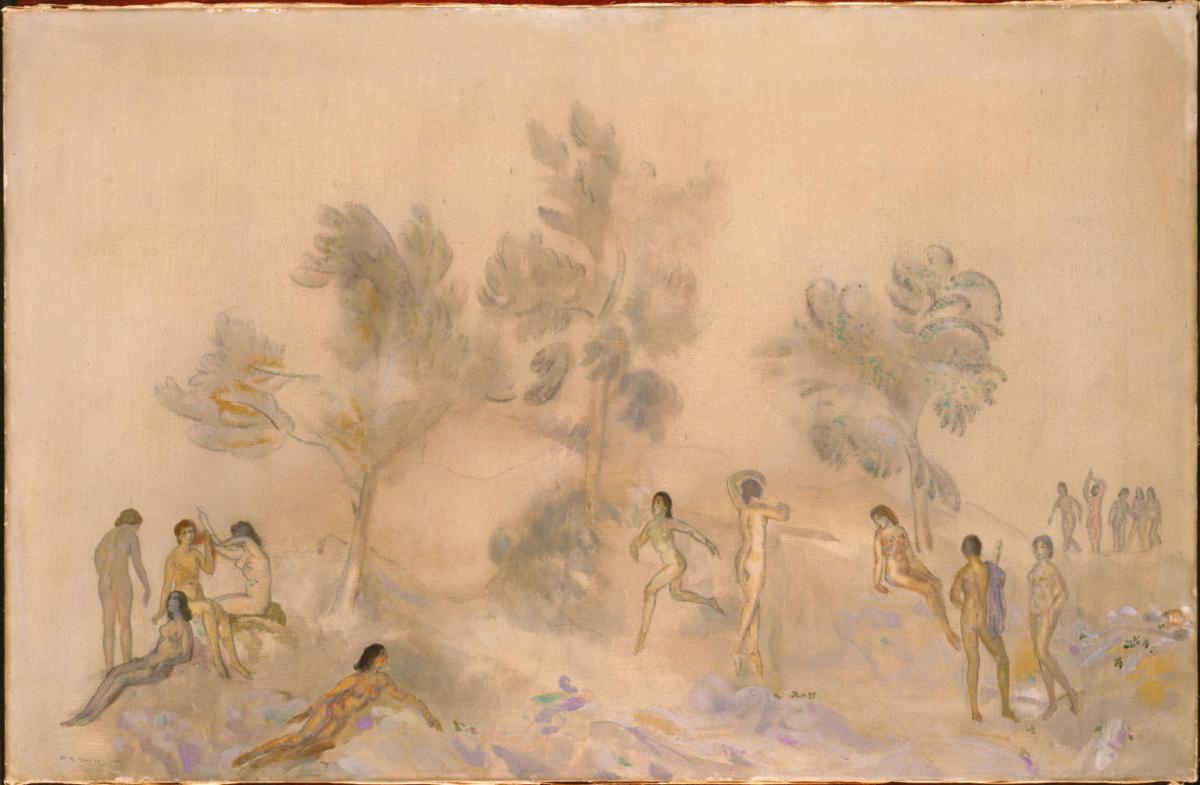Tissue Parnassian
Arthur B. Davies ( before 1924 )

Described by Duncan Phillips as invoking “modern moods of wistful reverie about antique art”, Tissue Parnassian has an ephemeral quality, a feeling, as the title suggests, of tissue-like delicacy that derives from both the imagery and the medium (an unusual combination of oil and charcoal). The subject was loosely adapted from classical mythology. Parnassus was the Greek mountain sacred to Apollo and the Muses, and was a common metaphor in poetry. Davies depicted it as an another-worldly place high up in the rarified atmosphere of a luminous, salmon-pink sky. The Muses – nine sister goddesses who presided over song, poetry, and the arts and sciences, and hence symbolized inspiration – assume a variety of poses and are accompanied by several other deities. Only one figure is identified by an attribute: the god Hermes bears his staff, the caduceus, a gift Apollo gave him in gratitude for inventing the lyre. Duncan Phillips saw in this painting “the divinely beautiful possibilities of the human figure, considered singly and in groups….” He added, however, that “for all the seductive sensuousness,” Davies’s figures are not “of this earth.”
Davies’s treatment of the figure had evolved in response to various influences. After his first trip to Italy in 1895, he painted nudes that echoed the long-limbed but full-figured ideal of Botticelli in Italianate settings reminiscent of the Venetian renaissance. In the early 1900s, draped renaissance madonnas and goddesses gave way to nude and partially draped figures influenced by the classicizing approach of the early French symbolist Pierre Puvis de Chavannes.
While Puvis’s classical deities are weighty and self-consciously derived from the antique, Davies’s have less physicality, more animation, and fewer classical attributes. The element of stylized, dance-like motion in Davies’s work can be traced to the influence of his second wife, Edna Potter, a former dancer with Isadora Duncan’s troupe. Because of his interest in antiquity, Davies was naturally drawn to theories of modern dance that derived from contemporary interpretations of primitive cultures, especially those of the Hellenic world.